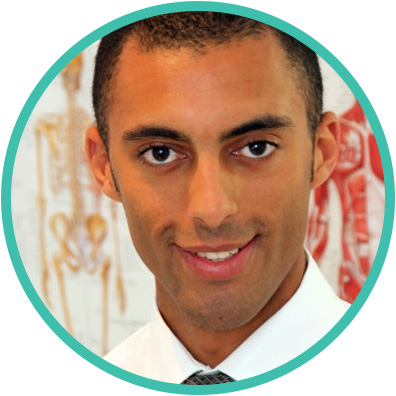
The science of accelerated recovery from injury
As an Osteopath I am often asked “How long will my injury take to get better?”. The answer to this question is actually quite complex as there are many factors which influence the speed of tissue recovery.
Clients of Steve Grant, who kindly asked me to write this article, know all too well how recovery from injury can be influenced by putting your body in an optimal place with correct nutritional and environmental support. But, what is it that causes the healing process to occur? How can we speed this up and how can ‘a little Osteopath’ like me help you optimise your recovery strategy?
If we break down tissue into its most simple cellular organelles we begin to find some answers as to the building blocks of health (and disease). Mitochondria are the powerhouse of every cell in the body. Most people remember back to their time studying biology in school when you mention mitochondria, but what are they and how do they influence tissue recovery and regeneration?
What are mitochondria?
Ok, so heres a brief summary of the science…
Mitochondria are the cell’s power producers. They convert energy into forms that are usable by the cell. They are the sites of cellular respiration, which ultimately generates fuel for the cell’s activities which is important when considering the effects of tissue recovery and the energy debt that needs to be recovered during reparatory processes. The number of mitochondria in a cell can range from a few to several thousand, depending on the type of cell. Being semiautonomous they are able to replicate, divide and grow to make more of themselves.
Mitochondria are commonly tubular or oblong shaped and are bounded by double membranes. The double membranes divide the mitochondrion into two distinct parts: the intermembrane space and the mitochondrial matrix.
The sensitivity of mitochondria to long wave monochromatic light has been confirmed by numerous studies, most of which explored the direct effect of laser light on isolated mitochondria or whole cells. Such exposure increased the transmembrane electrochemical potential of Hydrogen and the transmembrane electric potential (∆ψ) (Passarella et al., 1984; Pastore et al., 1996) as well as oxygen and calcium uptake by mitochondria (Kato et al.,; Greco et al., 2001). Such exposure modified the reactions of certain dehydrogenases associated with NADH (Passarella et al., 1983) and increased the rate of ATP synthesis (Passarella et al., 1988; Pastore et al., 1996). The key here being the increased rate of ATP synthesis.
ATP, if we remember back to our school biology lessons, is the cellular energy currency. It is synthesised via the Krebs cycle on the membranes and cristae of the mitochondria. It would appear that the levels of ATP in cells can be increased by stimulating more efficient production. The respiratory chain in the mitochondria is controlled by enzymatic reactions of which cytochrome c-oxidase is the terminal enzyme.
There are some studies (Karu 1999) which confirm experimentally the photosensitive nature of cytochrome c oxidase to red-near-infrared light. It is thought that the absorption of light by molecules of this enzyme was proposed to accelerate electron transport in the respiratory chain activating ATP synthesis.
As with all tissue recovery this is largely an energy dependant process. So the more recovery the more energy is needed, quite simply. Mitochondria therefore have to perform at optimum levels to help keep up with the increased energy demands of the cell.
Accelerated tissue recovery in bone – an example of laser tissue recovery
As we all know there is very little that can be done when you sustain a fracture or serious tissue injury. Luckily bone has an immense capacity for recovery and healing, most of the time this is able to continue unobstructed over the course of 5-6 weeks, normally. There are times where this process does not carry on due to obstructions in blood supply, mechanical instability or competition with highly proliferating tissues.
Bone can be accelerated in its healing pathways by providing the mitochondria with a stimulus to help increase their enzymatic response and thus their production of ATP, the cells energy currency.
Low level laser has been studied before and has shown positive effects with the speeding up of this metabolic pathway. Newer class 4 lasers have been used and have been showing very encouraging results with reduction of pain and accelerated recovery in tissues. With some people reporting immediate pain reduction and all people reporting accelerated healing rates.
Typically in clinic we tend to see those people who have been failed by the bodies natural ability to heal fractures or those still suffering from pain long after the fracture has healed or during the healing process.
Summary
- Slow recovery from injury can be down to mitochondrial function or overload
- Mitochondria are sensitive to laser
- Laser speeds up tissue recovery (bone, ligament and muscle recovery is quicker)
- Accelerated recovery from injury

